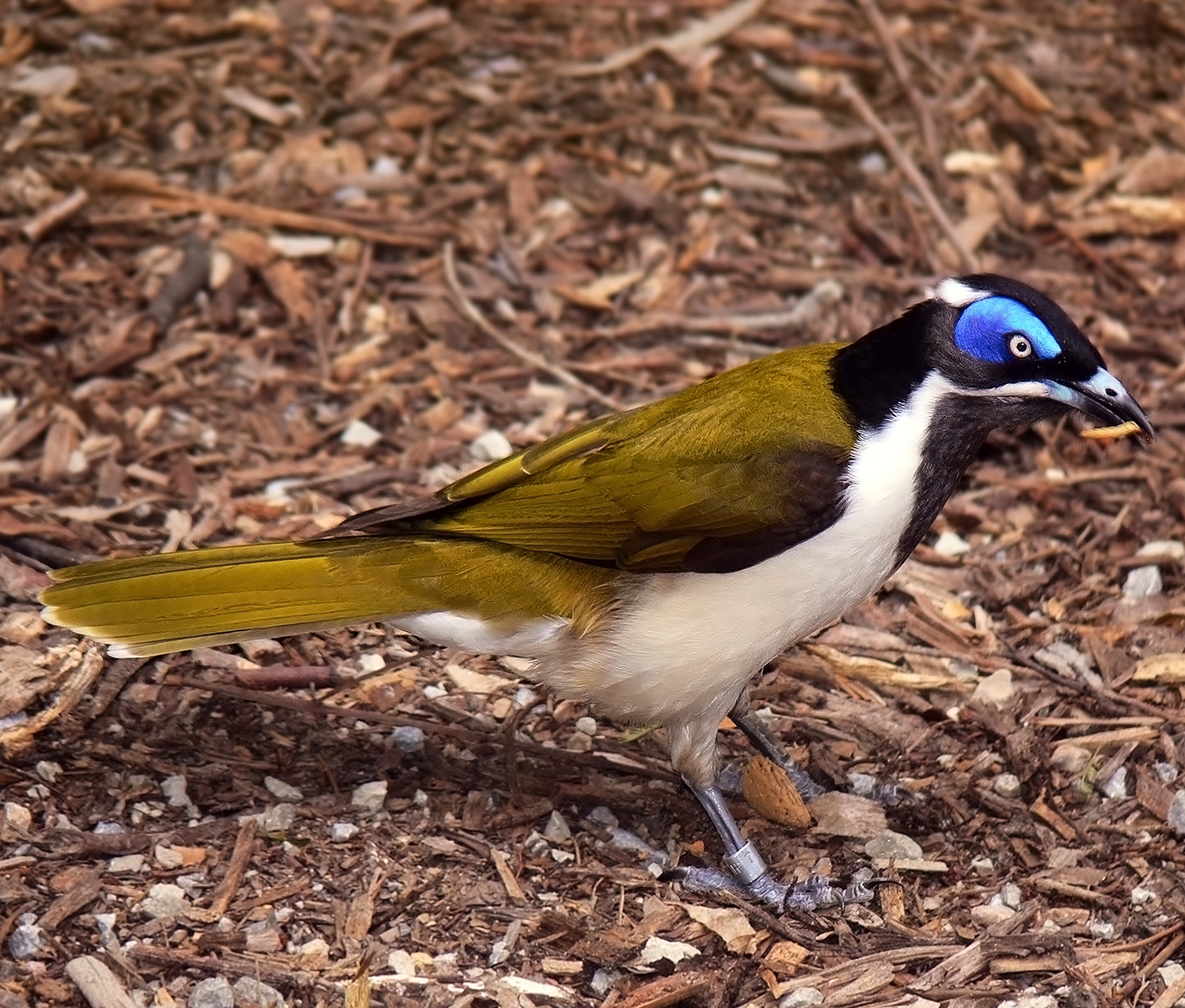 |
| (Photo from Whatafy) |
Common name:
blue-faced honeyeater (en); melífago-de-faces-azuis (pt); méliphage à oreillons bleus (fr); mielero cariazul (es); blauohr-honigfresser (de)
Taxonomy:
Order Passeriformes
Family Meliphagidae
Range:
This species is found in northern and eastern mainland Australia, from the Kimberley region, Western Australia to near Adelaide, South Australia.
Size:
These birds are 25-32 cm long and have a wingspan of 44 cm. They weigh around 105 g.
Habitat:
The blue-faced honeyeater is found in open Eucalyptus woodlands, mangroves, dry savannas, scrublands and also in orchards, parks, golf courses and gardens.
Diet:
They feed on insects and other invertebrates, on the nectar of various native and exotic flowers and on various fruits.
Breeding:
Blue-faced honeyeaters can form breeding pairs or breed cooperatively with several helpers, typically immature birds, helping the dominant pair. They breed in July-January, most often nesting on abandoned nests of other species, or building a neat round cup made of bark, twigs and grass. The nest is placed on a tree 3-20 m above the ground. The female lays 2-3 creamy eggs with brown speckles, which are incubated for 16-17 days. The chicks are raised by both parents and the helpers and fledge about 20 days after hatching, but remain with the parents for several more weeks. Each pair raises several broods per season.
Conservation:
IUCN status – LC (Least Concern)
This species has a very large breeding range and is described as abundant in the north of its range and uncommon in the south. The population is suspected to be stable in the absence of evidence for any declines or substantial threats.







